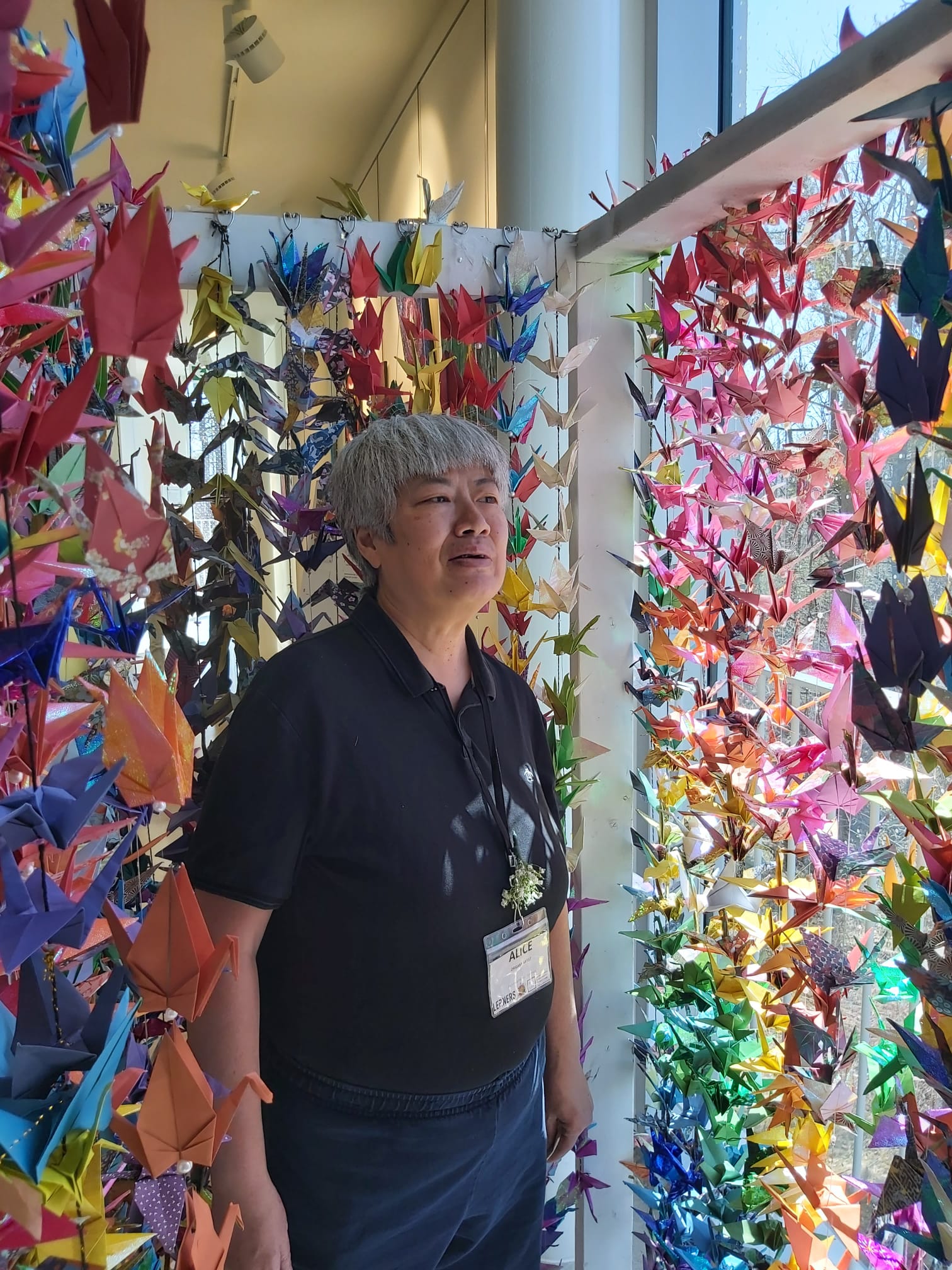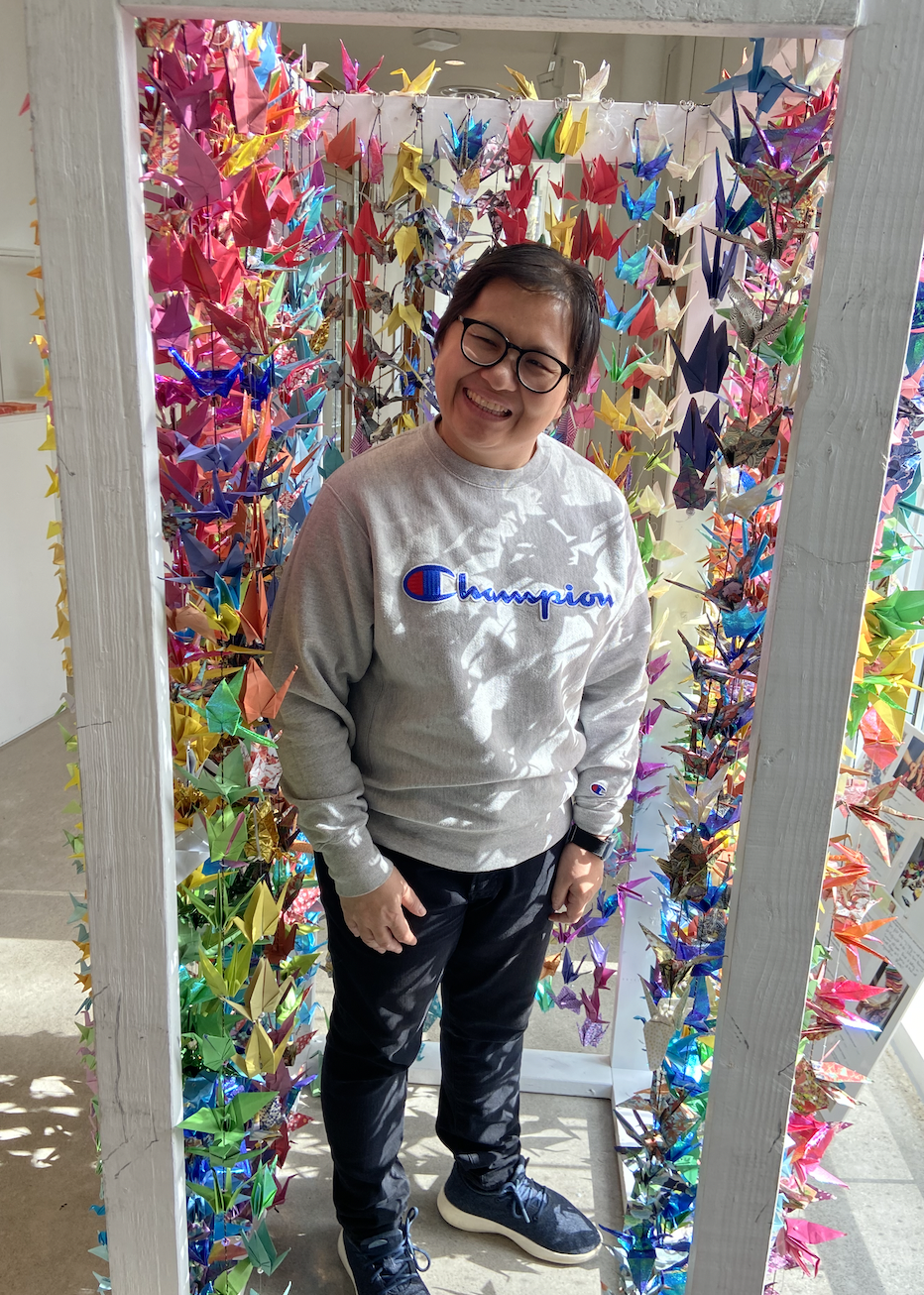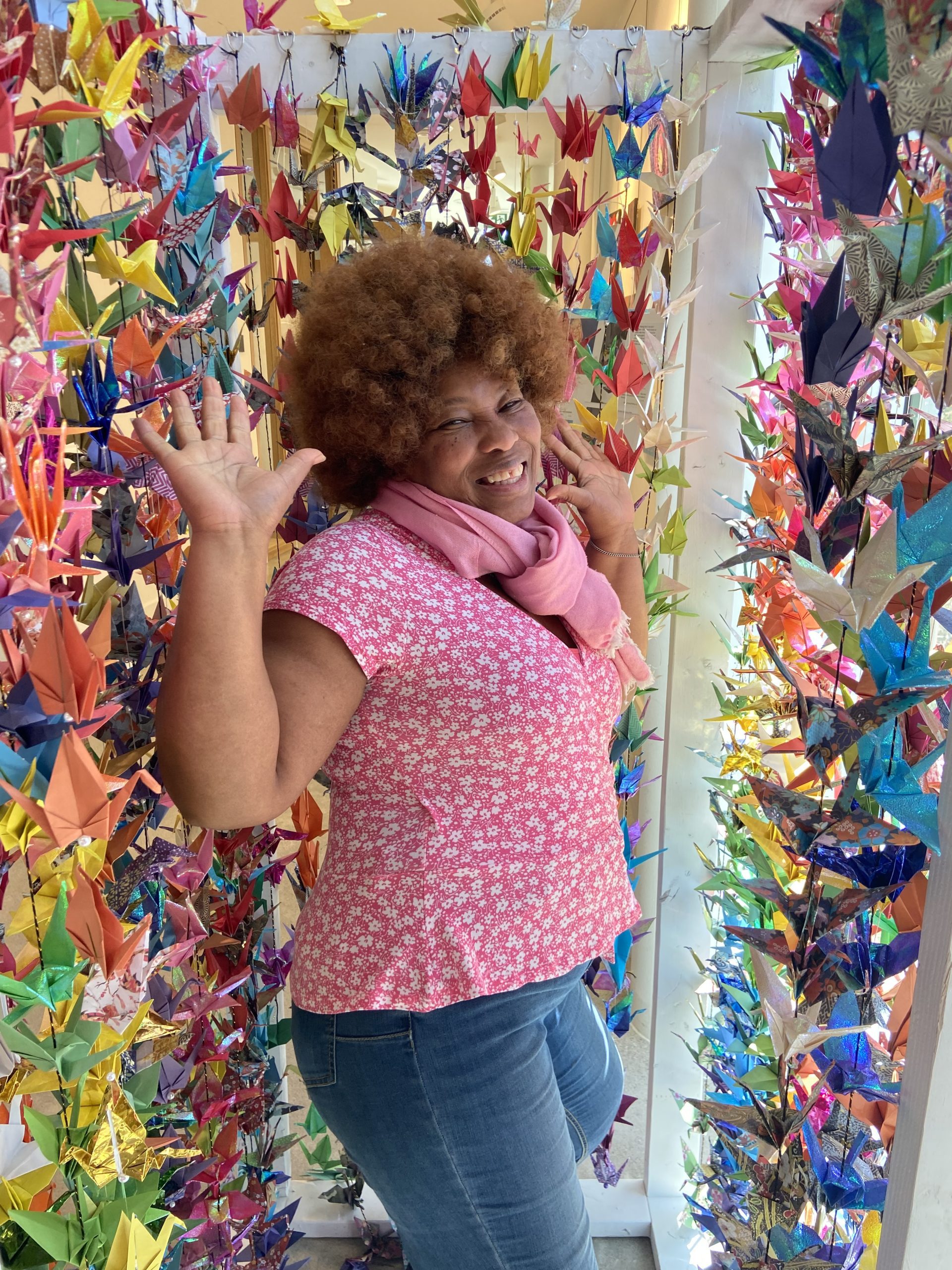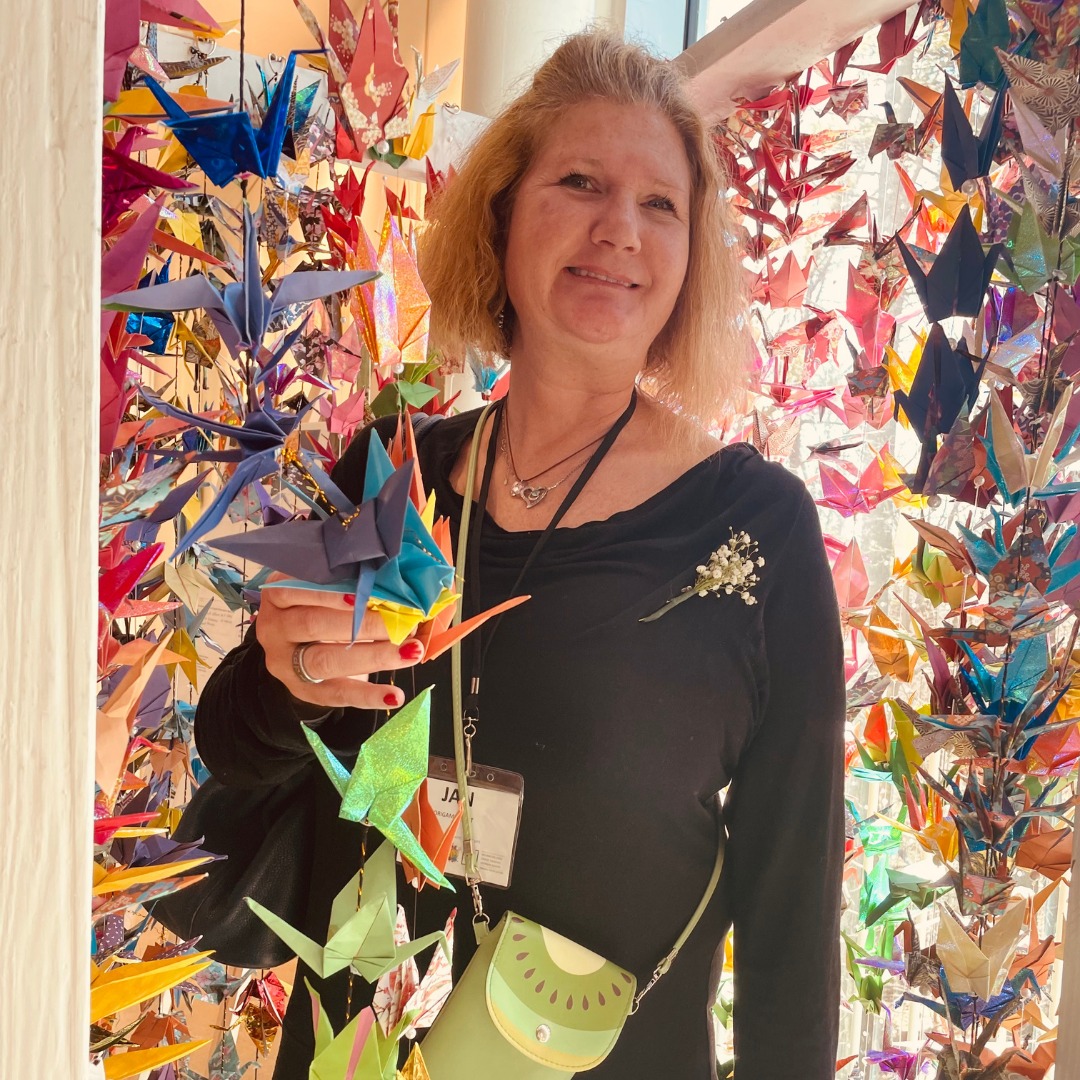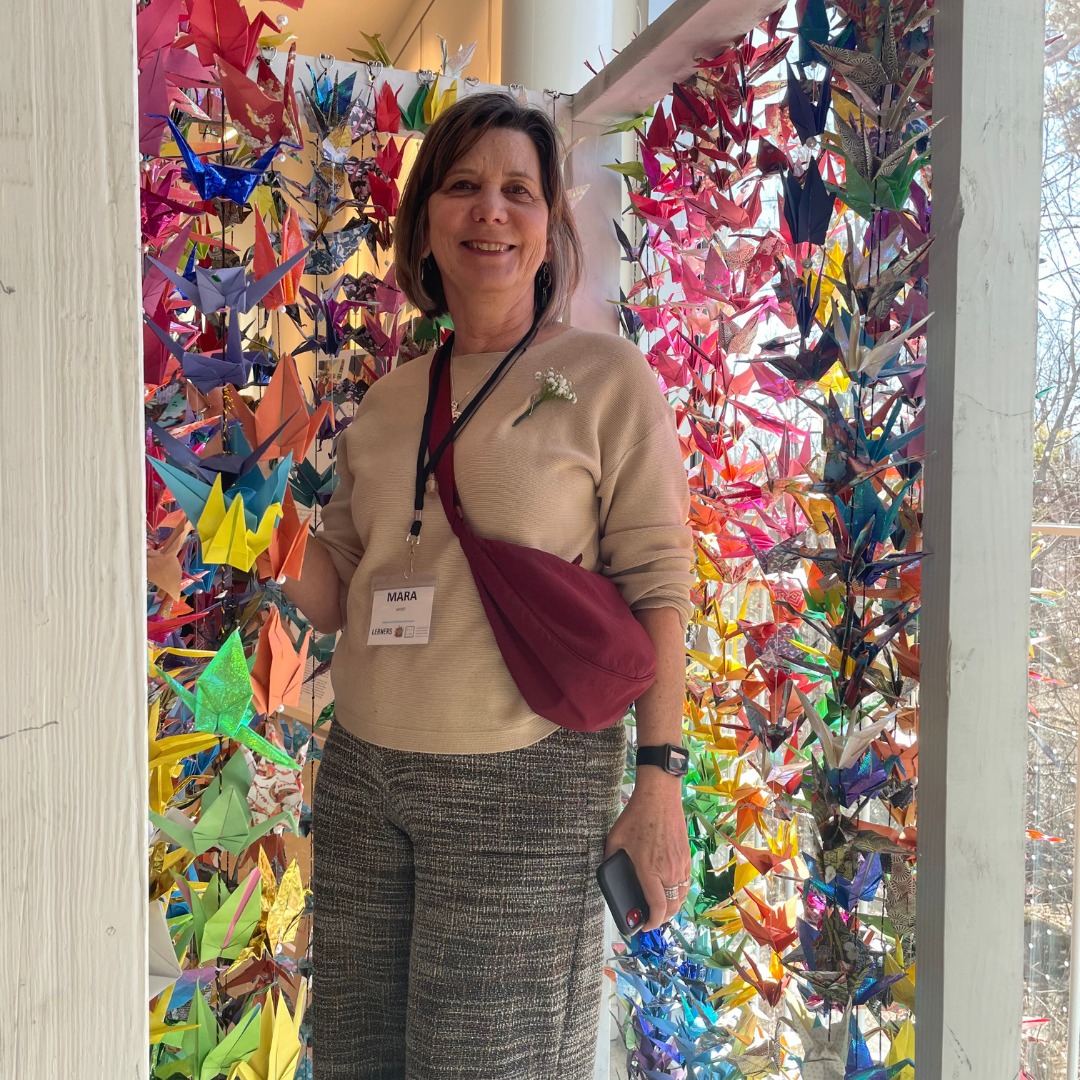Master Crane Operators – The Story
Please read below to learn what this project is about AND watch the video to see how 1500 origami paper cranes were created in the month of March, 2024 by an amazing community of people living with the effects of brain injury and their allies!
Look what we did!





